Prolog
This blog is mostly about my recent experiences with the X-Plane flight simulator.
It’s long-winded even by my standards.
And what I originally wrote as an epilog might just be the best part.
So I moved that passage forward, that you my cherished semi-cohort might read it out of the gate, with liberty to abandon the remainder without FOMO should you grow weary of, or simply not give a damn about, (simulated) flying stories.
But for those who persevere, or just skip past, I did leave an Easter egg or two in later epilogs.
This blog is mostly about my recent experiences with the X-Plane flight simulator.
It’s long-winded even by my standards.
And what I originally wrote as an epilog might just be the best part.
So I moved that passage forward, that you my cherished semi-cohort might read it out of the gate, with liberty to abandon the remainder without FOMO should you grow weary of, or simply not give a damn about, (simulated) flying stories.
But for those who persevere, or just skip past, I did leave an Easter egg or two in later epilogs.
Epilog 1
The title of this blog occurred to me as I recognized how my (simulated) flights that occurred in the old and new years seemed allegorical of 2020 and 2021 as a whole.
My first (simulated) flights were all in 2020. Most of them ended in (simulated) twisted piles of smoking wreckage.
In the reality of 2020, my father died.
In the reality of 2020, my wife endured a prolonged and painful medical situation.
In the reality of 2020, I and tens of millions of others lost what had seemed like secure employment, the collateral damage of a pandemic that has claimed the lives of hundreds of thousands of my fellow citizens and millions worldwide. Those deaths have been lonely and excruciating tragedies, and many who have survived will face painful chronic illnesses and dreadful financial hardship.
The reality of 2020 was a twisted pile of smoking wreckage.
But my very first experience of 2021, irrespective of the fact that it was derived entirely from a simulation, was an epic journey – my favorite kind. In a very real sense, it was unexpectedly and wonderfully uplifting, with a triumphant ending.
I celebrated with a glass of champagne.
I can only hope the allegory holds.
The title of this blog occurred to me as I recognized how my (simulated) flights that occurred in the old and new years seemed allegorical of 2020 and 2021 as a whole.
My first (simulated) flights were all in 2020. Most of them ended in (simulated) twisted piles of smoking wreckage.
In the reality of 2020, my father died.
In the reality of 2020, my wife endured a prolonged and painful medical situation.
In the reality of 2020, I and tens of millions of others lost what had seemed like secure employment, the collateral damage of a pandemic that has claimed the lives of hundreds of thousands of my fellow citizens and millions worldwide. Those deaths have been lonely and excruciating tragedies, and many who have survived will face painful chronic illnesses and dreadful financial hardship.
The reality of 2020 was a twisted pile of smoking wreckage.
But my very first experience of 2021, irrespective of the fact that it was derived entirely from a simulation, was an epic journey – my favorite kind. In a very real sense, it was unexpectedly and wonderfully uplifting, with a triumphant ending.
I celebrated with a glass of champagne.
I can only hope the allegory holds.
Not An Epilog
I spent the first couple hours of 2021 doing something almost comparable to the Colorado tour I didn't take last year.
I’ve long granted Colorado my vote as the world’s best place to ride motorcycles, for a host of reasons – not least that it also has my vote for the best selection of breweries wherein to enjoy the world’s finest beer at the conclusion of any day’s ride. I'm fortunate to have indulged myself in Colorado many times. The past decade, since Dad and Cathy built their house in South Fork, has been particularly rich in those experiences; since 2011 the only year I didn’t ride in Colorado was the year I rode to Alaska instead.
In 2020 I rode less than any year since 2004, and not a mile in Colorado.
Yet more smoking wreckage.
But the cusp of the new year delivered a convergence of factors that yielded a novel visit to my favorite touring destination.
Like so many 2020 experiences, it was virtual.
It had almost nothing to do with either motorcycles or Colorado beer.
*
The only computer games of interest to me are flight simulators.
They’re a balm for the ache of my biggest regret: that I didn’t earn my pilot’s wings decades ago, despite having nailed my FAA written exam in 1980 on the first attempt.
I played the very first PC-based flight simulator not long after, back when the IBM PC was little more than a trendy new contraption. The game was installed from a single 360k floppy disc and was nothing more than a joust between World War I biplanes, with jagged monochrome graphics and barely the suggestion of terrain. Eventually I acquired a little 2-axis joystick with a button for the gun trigger, but initially control inputs were made entirely by keystroke.
Flash forward a few years and the sims were getting sophisticated; for use with my first Windows 98 box I bought Jane’s F-15 and a Thrustmaster Top Gun Fox 2 Pro USB joystick.
I spent the first couple hours of 2021 doing something almost comparable to the Colorado tour I didn't take last year.
I’ve long granted Colorado my vote as the world’s best place to ride motorcycles, for a host of reasons – not least that it also has my vote for the best selection of breweries wherein to enjoy the world’s finest beer at the conclusion of any day’s ride. I'm fortunate to have indulged myself in Colorado many times. The past decade, since Dad and Cathy built their house in South Fork, has been particularly rich in those experiences; since 2011 the only year I didn’t ride in Colorado was the year I rode to Alaska instead.
In 2020 I rode less than any year since 2004, and not a mile in Colorado.
Yet more smoking wreckage.
But the cusp of the new year delivered a convergence of factors that yielded a novel visit to my favorite touring destination.
Like so many 2020 experiences, it was virtual.
It had almost nothing to do with either motorcycles or Colorado beer.
*
The only computer games of interest to me are flight simulators.
They’re a balm for the ache of my biggest regret: that I didn’t earn my pilot’s wings decades ago, despite having nailed my FAA written exam in 1980 on the first attempt.
I played the very first PC-based flight simulator not long after, back when the IBM PC was little more than a trendy new contraption. The game was installed from a single 360k floppy disc and was nothing more than a joust between World War I biplanes, with jagged monochrome graphics and barely the suggestion of terrain. Eventually I acquired a little 2-axis joystick with a button for the gun trigger, but initially control inputs were made entirely by keystroke.
Flash forward a few years and the sims were getting sophisticated; for use with my first Windows 98 box I bought Jane’s F-15 and a Thrustmaster Top Gun Fox 2 Pro USB joystick.
I didn’t have a large monitor, let alone multiple screens, but otherwise it was a good rig for its day. I logged a lot of hours in the (simulated) F-15, with the unfortunate result that any real airplane I’m ever likely to strap on will certainly fail to meet my expectations. Flying the Eagle I’d shoot for altitude records. I'd shoot landings, often with absurdly steep and hot approaches and sometimes with both engines flamed out. I'd shoot up the bridges and towers and a particular set of landmarks in downtown Baghdad that have always offended my sensibilities. Kudos to the game designers for providing those gigantic crossed scimitars as targets; it was tremendously satisfying to track my bombs as they fell and watch Saddam’s belligerent sculptures be reduced to craters and rubble.
I’d shoot down not only enemy aircraft but also friendlies, as the inevitable outcome of frustration with the one skill I failed to even accomplish let alone master: aerial refueling. While I could never manage to hold formation well enough to gas up, I developed a degree of marksmanship with the F-15’s 20mm cannon and would use it to blow off the KC-135’s engines one by one. Remarkably, the Stratotanker could continue to fly on only one engine, but when the last was gone the ship would roll over and fall out of the sky trailing four spiraling plumes of flame and black smoke. The crew would bail out and I’d troll the descending parachutes, collapsing canopies with cannon fire or jet wash and trying to suck the helpless dangling airmen into the Eagle’s air intakes. Success in this exercise of precision flying would invariably frag the engine and often cause other damage, after which I’d try to limp the crippled bird back to base.
Adds blood-red color to the phrase “dead stick landing”.
When I upgraded to Windows XP the game still ran, though it wasn’t truly happy there. But Windows 8 shot down Jane’s F-15 faster than a missile from one of those damn F-14 Tomcats I’d sometimes pit myself against.
So I’ve been out of the flight sim action for a long time.
What didn’t help the situation at all was when my son John gave me a copy of X-Plane 11 for Christmas a couple years ago. While it was arguably the best PC-based flight simulator available, I had no machine capable of running it. Ever since, I’ve been noodling with the idea of buying a dedicated gaming computer. I enquired of my long-time Plex colleague Pete, who flew an F-16 sim and had built a sophisticated triple-monitor system which he used to great advantage when he set about earning his non-virtual pilot’s wings.
Pete provided me a comprehensive parts list, but I never did anything with it. Seemed an unnecessary and unjustified expense.
Flash forward again. A couple weeks before 2020 expired, Plex executed a “Reduction In Force” and declared in comprehensive and precisely crafted legalese that I and a great many of my compatriots were no longer worth employing.
Surprise! Happy birthday, John! Merry Christmas too! Sincerely, Plex Systems.
I was suddenly and unexpectedly without a job for the first time in nearly three decades. And since I was also obligated to return the company laptop, I was suddenly and unexpectedly without anything resembling an adequate computer.
This meant I suddenly and unexpectedly had all the justification needed to buy a brand-new high-performance PC.
I have many ideas about what I might do in a post-Plex world, and they all benefit from, if not outright depend on, having a PC with the kind of power a flight simulator requires. I didn’t even consider buying a laptop; my Plex laptop hadn’t been undocked since March, when we all started working from home. I expect this mode of operation to be the new normal and if I need a portable PC I’ll use my old personal laptop, which is good enough for taking notes or writing blog dispatches, though a Surface Pro would fit even better into a motorcycle saddlebag.
Pete sent me a link to a website that made it easy to figure out what that week’s notion of a hot gaming PC should have in its guts. I considered building one myself but found the machine I needed in stock at Costco: a Lenovo Legion 7 with all the right bells and whistles. It arrived on December 29th .
I prioritized transferring my files and applications, getting the machine operational for business use. My son came over on the 30th, joining Laurel and I for dinner and a movie, and spent the night. By then the new machine was running a 47-inch LED TV (recently retired when we upgraded the living room) as the main monitor, flanked by the two 22-inch Dell monitors I’ve long used with the laptop. By afternoon of New Year’s Eve I was ready to install X-Plane 11. With 8 DVDs in the package, this required two (Michigan) beers to accomplish.
Installation was complete by the time John departed for what he claimed would be a small, socially distanced New Year’s Eve party. The simulator came to life with a demonstration flight in progress, a Cessna 172 already airborne a couple thousand feet above SEA-TAC.
I’d shoot down not only enemy aircraft but also friendlies, as the inevitable outcome of frustration with the one skill I failed to even accomplish let alone master: aerial refueling. While I could never manage to hold formation well enough to gas up, I developed a degree of marksmanship with the F-15’s 20mm cannon and would use it to blow off the KC-135’s engines one by one. Remarkably, the Stratotanker could continue to fly on only one engine, but when the last was gone the ship would roll over and fall out of the sky trailing four spiraling plumes of flame and black smoke. The crew would bail out and I’d troll the descending parachutes, collapsing canopies with cannon fire or jet wash and trying to suck the helpless dangling airmen into the Eagle’s air intakes. Success in this exercise of precision flying would invariably frag the engine and often cause other damage, after which I’d try to limp the crippled bird back to base.
Adds blood-red color to the phrase “dead stick landing”.
When I upgraded to Windows XP the game still ran, though it wasn’t truly happy there. But Windows 8 shot down Jane’s F-15 faster than a missile from one of those damn F-14 Tomcats I’d sometimes pit myself against.
So I’ve been out of the flight sim action for a long time.
What didn’t help the situation at all was when my son John gave me a copy of X-Plane 11 for Christmas a couple years ago. While it was arguably the best PC-based flight simulator available, I had no machine capable of running it. Ever since, I’ve been noodling with the idea of buying a dedicated gaming computer. I enquired of my long-time Plex colleague Pete, who flew an F-16 sim and had built a sophisticated triple-monitor system which he used to great advantage when he set about earning his non-virtual pilot’s wings.
Pete provided me a comprehensive parts list, but I never did anything with it. Seemed an unnecessary and unjustified expense.
Flash forward again. A couple weeks before 2020 expired, Plex executed a “Reduction In Force” and declared in comprehensive and precisely crafted legalese that I and a great many of my compatriots were no longer worth employing.
Surprise! Happy birthday, John! Merry Christmas too! Sincerely, Plex Systems.
I was suddenly and unexpectedly without a job for the first time in nearly three decades. And since I was also obligated to return the company laptop, I was suddenly and unexpectedly without anything resembling an adequate computer.
This meant I suddenly and unexpectedly had all the justification needed to buy a brand-new high-performance PC.
I have many ideas about what I might do in a post-Plex world, and they all benefit from, if not outright depend on, having a PC with the kind of power a flight simulator requires. I didn’t even consider buying a laptop; my Plex laptop hadn’t been undocked since March, when we all started working from home. I expect this mode of operation to be the new normal and if I need a portable PC I’ll use my old personal laptop, which is good enough for taking notes or writing blog dispatches, though a Surface Pro would fit even better into a motorcycle saddlebag.
Pete sent me a link to a website that made it easy to figure out what that week’s notion of a hot gaming PC should have in its guts. I considered building one myself but found the machine I needed in stock at Costco: a Lenovo Legion 7 with all the right bells and whistles. It arrived on December 29th .
I prioritized transferring my files and applications, getting the machine operational for business use. My son came over on the 30th, joining Laurel and I for dinner and a movie, and spent the night. By then the new machine was running a 47-inch LED TV (recently retired when we upgraded the living room) as the main monitor, flanked by the two 22-inch Dell monitors I’ve long used with the laptop. By afternoon of New Year’s Eve I was ready to install X-Plane 11. With 8 DVDs in the package, this required two (Michigan) beers to accomplish.
Installation was complete by the time John departed for what he claimed would be a small, socially distanced New Year’s Eve party. The simulator came to life with a demonstration flight in progress, a Cessna 172 already airborne a couple thousand feet above SEA-TAC.
I’d feared my ancient joystick would prove hopelessly outdated, perhaps unsupported. But X-Plane knew exactly what it was, what it looked like, what buttons it had. I did a quick axis calibration, and I was flying.
A simulated Cessna 172 would certainly help a student pilot get a feel for the real thing, but in terms of fun factor does not compare favorably to a simulated McDonnell-Douglas F-15.
Without weapons to launch, the most fun available in the Cessna was flying into the first canyon I found and buzzing along the freeway at the bottom of it. When the road abruptly ended I belatedly realized the canyon was a box, and from down on the deck failed to successfully climb out.
I crashed into the canyon wall, leaving a pile of smoking wreckage.
I chose not to consider this an inauspicious first entry in my X-Plane logbook.
What I did instead was switch my aircraft choice to the game's only provisioned jet fighter: the McDonnell-Douglas F-4 Phantom II.
A simulated Cessna 172 would certainly help a student pilot get a feel for the real thing, but in terms of fun factor does not compare favorably to a simulated McDonnell-Douglas F-15.
Without weapons to launch, the most fun available in the Cessna was flying into the first canyon I found and buzzing along the freeway at the bottom of it. When the road abruptly ended I belatedly realized the canyon was a box, and from down on the deck failed to successfully climb out.
I crashed into the canyon wall, leaving a pile of smoking wreckage.
I chose not to consider this an inauspicious first entry in my X-Plane logbook.
What I did instead was switch my aircraft choice to the game's only provisioned jet fighter: the McDonnell-Douglas F-4 Phantom II.
I was happy to find I could load out a Vulcan cannon in a centerline pod, in addition to an inventory of the same missiles and bombs I’d have mounted to an F-15. What I couldn’t see was an obvious means of engaging those weapons in air combat.
Still, this was more like it.
I guessed takeoff speed would be something like 200 knots, and while I did manage to get airborne, less than twenty seconds later I found myself in an inverted flat spin. Immediately thereafter I was nothing but a pile of smoking wreckage.
I don’t even know what I did wrong.
“The F-4 seems rather twitchy compared to the F-15”, I thought. “But perhaps I should just take the time to learn to fly this sim properly.”
This of course did not mean reading the manual, which I didn’t even bother to look for. Nor did it mean concession to the forgiving performance envelope of a Cessna 172.
What it meant was developing a visceral understanding of how X-Plane simulates the combined effect of three fundamental forces that affect heavier than air flight: weight, lift, and drag. There is also a fourth fundamental force – thrust – but my plan was to fly an aircraft in which thrust is a function of the pilot's manipulation of the other three.
I switched aircraft again and selected the Alexander-Schleicher ASK 21.
Still, this was more like it.
I guessed takeoff speed would be something like 200 knots, and while I did manage to get airborne, less than twenty seconds later I found myself in an inverted flat spin. Immediately thereafter I was nothing but a pile of smoking wreckage.
I don’t even know what I did wrong.
“The F-4 seems rather twitchy compared to the F-15”, I thought. “But perhaps I should just take the time to learn to fly this sim properly.”
This of course did not mean reading the manual, which I didn’t even bother to look for. Nor did it mean concession to the forgiving performance envelope of a Cessna 172.
What it meant was developing a visceral understanding of how X-Plane simulates the combined effect of three fundamental forces that affect heavier than air flight: weight, lift, and drag. There is also a fourth fundamental force – thrust – but my plan was to fly an aircraft in which thrust is a function of the pilot's manipulation of the other three.
I switched aircraft again and selected the Alexander-Schleicher ASK 21.
I’ve been captivated for decades by the idea of sailplanes. I most appreciate their sheer mechanical elegance.
The first time I saw a high-performance sailplane up close was during the time I worked at Marsh Aviation in Mesa, Arizona. Marsh was in the business of converting crop dusters from radial engines to turboprops, and the reason those airplanes could fly at all was due to massive application of that fourth force. It took an enormous amount of power to drag all that payload and plumbing around the sky, with stout fixed landing gear and spray booms and flying wires and screws and rivet heads jutting out everywhere.
Those planes were brutes.
By contrast, a high-performance sailplane is the sleekest means of transport ever. Surfaces are polished composite and plexiglass, and the airframe contains nothing that isn’t required for the sole purpose of keeping a pilot and (optionally) a passenger aloft and returning them safely to earth. Not racecars, not racing sailboats, not racing bicycles, are so flawlessly streamlined – though I’ll admit a hang glider is, despite its less sexy contours, the most elegant machine of all, and the device which really does make “the flyingest flying” possible for humans.
Because there’s no motor to cover up your mistakes, you need real skill to keep such a sky machine aloft. Even more to land it in one piece.
I relish the idea of being that good a pilot.
*
A Stinson L5 Sentinel gave me a tow up from SEA-TAC. Flying behind the towplane was tricky and I didn’t do it very well, but at least I didn’t end up in an inverted flat spin. I released the tow line and flew around a bit, looking for thermals but finding none, and eventually spiraled down to a successful if clumsy landing.
The absence of rising columns of warm air immediately made me think about “ridge lift”: massive volumes of air pushed upwards when strong winds encounter mountain slopes, forming atmospheric waves on which a soaring wing can surf for hundreds of miles while the pilot looks down on the most spectacular scenery possible. I fantasize of living in a high place where I can launch a glider down a slope, catch some lift, and fly indefinitely until landing where I started, obtaining what little I need of the fourth force by simply exploiting the first three.
I changed my simulated location to a small glider port east of the Rocky Mountains' Front Range, near Colorado Springs. A winch launch lofted me far more quickly and gracefully than did the tow plane, though release altitude was severely and strictly limited. After release I banked west toward the mountains.
But I still wasn’t finding any lift, and it would be a long hike to those mountains. I turned back toward the airstrip but ran out of energy before I got to it. I landed on a stretch of flat straight road – the only kind out there.
I relocated again, to Aspen/Pitkin County Airport in the very heart of the mountains, and dug into the simulator's weather configuration.
I quickly figured out how to specify the winds aloft, and ordered up strong westerlies at three relevant altitudes. My aim was to generate ridge lift along the western slopes of the surrounding mountains, though I was aware the same conditions would generate “rotor turbulence” downwind of the peaks, and serious downdrafts on the eastern slopes. I found the setting for thermals, which like the winds were set to zero by default, and maxed out all the sliders.
I also customized my joystick. In contrast to what’s needed to drive and make war with a jet fighter, my ancient stick had more controls than I could even use for the ASK 21. The speed brake toggle was still useful for exactly that purpose, but a switch I’d used to pickle air-to-ground ordinance was re-mapped as tow rope release. The gun trigger became wheel brakes. The slider that previously commanded twin Pratt & Whitney F100 afterburning turbofan engines was perfectly suited to the subtle adjustment of elevator trim. A button previously used for raising flaps now toggled audio output from the variometer, which is a critical instrument that reports whether the sailplane is gaining or losing altitude.
Another instrument important to soaring flight requires no switches and the real thing can be built by anyone with a sewing kit: the “yaw string” is literally nothing more than a length of yarn with one end taped to the windshield.
I had so many extra switches I assigned them to view functions, and still had one button leftover.
Winds ordained and joystick mapping optimized, I flew a couple short circuits around the pattern, landing poorly but successfully. Then I went out looking for ridge lift, and had no problem finding it; soon I was climbing through 15,000 feet… and blacking out due to lack of oxygen.
To solve this problem I had to uncheck the “physiology effects” setting, which unfortunately mashes up high-altitude hypoxia with positive-g blackout and negative-g red-out. This bothers me because I do want g-force effect simulation, but of course I would carry oxygen on a high-altitude glider flight. Sheesh.
Not having a positive-g blackout effect may have contributed to me ripping the wings off while performing a snap roll after what appeared to have been a successful inside loop.
On the next flight, a high-speed descent from high altitude followed by an attempt to fly under the power lines above a canyon north of the airport also resulted in catastrophic structural failure.
More smoking wreckage, even though there’s no reason for anything in a sailplane to burn.
It was getting on toward midnight. I took a break from the sim to open a magnum of (California) champagne, kiss my wife, and celebrate the end of one seriously horrible year.
Laurel had been in the middle of a movie so I left her to it, and returned to my simulator. It was time for a cross-country flight.
I launched from Aspen/Pitkin via the runway 15 winch.
The first time I saw a high-performance sailplane up close was during the time I worked at Marsh Aviation in Mesa, Arizona. Marsh was in the business of converting crop dusters from radial engines to turboprops, and the reason those airplanes could fly at all was due to massive application of that fourth force. It took an enormous amount of power to drag all that payload and plumbing around the sky, with stout fixed landing gear and spray booms and flying wires and screws and rivet heads jutting out everywhere.
Those planes were brutes.
By contrast, a high-performance sailplane is the sleekest means of transport ever. Surfaces are polished composite and plexiglass, and the airframe contains nothing that isn’t required for the sole purpose of keeping a pilot and (optionally) a passenger aloft and returning them safely to earth. Not racecars, not racing sailboats, not racing bicycles, are so flawlessly streamlined – though I’ll admit a hang glider is, despite its less sexy contours, the most elegant machine of all, and the device which really does make “the flyingest flying” possible for humans.
Because there’s no motor to cover up your mistakes, you need real skill to keep such a sky machine aloft. Even more to land it in one piece.
I relish the idea of being that good a pilot.
*
A Stinson L5 Sentinel gave me a tow up from SEA-TAC. Flying behind the towplane was tricky and I didn’t do it very well, but at least I didn’t end up in an inverted flat spin. I released the tow line and flew around a bit, looking for thermals but finding none, and eventually spiraled down to a successful if clumsy landing.
The absence of rising columns of warm air immediately made me think about “ridge lift”: massive volumes of air pushed upwards when strong winds encounter mountain slopes, forming atmospheric waves on which a soaring wing can surf for hundreds of miles while the pilot looks down on the most spectacular scenery possible. I fantasize of living in a high place where I can launch a glider down a slope, catch some lift, and fly indefinitely until landing where I started, obtaining what little I need of the fourth force by simply exploiting the first three.
I changed my simulated location to a small glider port east of the Rocky Mountains' Front Range, near Colorado Springs. A winch launch lofted me far more quickly and gracefully than did the tow plane, though release altitude was severely and strictly limited. After release I banked west toward the mountains.
But I still wasn’t finding any lift, and it would be a long hike to those mountains. I turned back toward the airstrip but ran out of energy before I got to it. I landed on a stretch of flat straight road – the only kind out there.
I relocated again, to Aspen/Pitkin County Airport in the very heart of the mountains, and dug into the simulator's weather configuration.
I quickly figured out how to specify the winds aloft, and ordered up strong westerlies at three relevant altitudes. My aim was to generate ridge lift along the western slopes of the surrounding mountains, though I was aware the same conditions would generate “rotor turbulence” downwind of the peaks, and serious downdrafts on the eastern slopes. I found the setting for thermals, which like the winds were set to zero by default, and maxed out all the sliders.
I also customized my joystick. In contrast to what’s needed to drive and make war with a jet fighter, my ancient stick had more controls than I could even use for the ASK 21. The speed brake toggle was still useful for exactly that purpose, but a switch I’d used to pickle air-to-ground ordinance was re-mapped as tow rope release. The gun trigger became wheel brakes. The slider that previously commanded twin Pratt & Whitney F100 afterburning turbofan engines was perfectly suited to the subtle adjustment of elevator trim. A button previously used for raising flaps now toggled audio output from the variometer, which is a critical instrument that reports whether the sailplane is gaining or losing altitude.
Another instrument important to soaring flight requires no switches and the real thing can be built by anyone with a sewing kit: the “yaw string” is literally nothing more than a length of yarn with one end taped to the windshield.
I had so many extra switches I assigned them to view functions, and still had one button leftover.
Winds ordained and joystick mapping optimized, I flew a couple short circuits around the pattern, landing poorly but successfully. Then I went out looking for ridge lift, and had no problem finding it; soon I was climbing through 15,000 feet… and blacking out due to lack of oxygen.
To solve this problem I had to uncheck the “physiology effects” setting, which unfortunately mashes up high-altitude hypoxia with positive-g blackout and negative-g red-out. This bothers me because I do want g-force effect simulation, but of course I would carry oxygen on a high-altitude glider flight. Sheesh.
Not having a positive-g blackout effect may have contributed to me ripping the wings off while performing a snap roll after what appeared to have been a successful inside loop.
On the next flight, a high-speed descent from high altitude followed by an attempt to fly under the power lines above a canyon north of the airport also resulted in catastrophic structural failure.
More smoking wreckage, even though there’s no reason for anything in a sailplane to burn.
It was getting on toward midnight. I took a break from the sim to open a magnum of (California) champagne, kiss my wife, and celebrate the end of one seriously horrible year.
Laurel had been in the middle of a movie so I left her to it, and returned to my simulator. It was time for a cross-country flight.
I launched from Aspen/Pitkin via the runway 15 winch.
Fact check: there’s probably no glider winch on the real runway 15, and there are definitely a lot more real private jets parked at this airport. Always.
I turned toward the ridge just off the end of the runway and immediately caught lift, riding it up and heading south.
My intended destination: Gunnison-Crested Butte Regional Airport.
My navigational aids: a magnetic compass, knowledge that Gunnison is south of Aspen, and confidence that I'd be able to spot Blue Mesa Reservoir, which lies west of town.
I turned toward the ridge just off the end of the runway and immediately caught lift, riding it up and heading south.
My intended destination: Gunnison-Crested Butte Regional Airport.
My navigational aids: a magnetic compass, knowledge that Gunnison is south of Aspen, and confidence that I'd be able to spot Blue Mesa Reservoir, which lies west of town.
Soon I was soaring over the mountains of Colorado.
You know, those very same mountains that are my favorite place to ride my motorcycle, and where I didn’t get to ride in 2020.
You know, those very same mountains that are my favorite place to ride my motorcycle, and where I didn’t get to ride in 2020.
Eventually, as expected, I spotted what had to be Blue Mesa Reservoir. Gunnison was downwind to the east. It was gratifying to confirm I was exactly where I thought I was, and where I wanted to be.
At this point I thought, “Why stop at Gunnison?”
CO-149, “The Silver Thread”, is one of my favorite rides.
Its northern terminus is the bridge over the Gunnison River.
CO-149, “The Silver Thread”, is one of my favorite rides.
Its northern terminus is the bridge over the Gunnison River.
Its southern terminus is Dad and Cathy’s house.
In the time-honored tradition of seat-of-the-pants pilotage, I followed the road as it wound south toward Lake City.
This wasn’t as easy as it should have been. The simulator only displays roads when they’re pretty close, in a way I don’t think is particularly realistic. The simulation also doesn’t distinguish dirt roads from pavement – and there are a lot more dirt roads than paved ones in this part of Colorado. I’m pretty sure I’d have been able to pick the Silver Thread out of the clutter more easily had I been flying a real ASK 21.
Of course, had I been flying a real ASK 21 I most likely would have become a twisted pile of non-smoking wreckage on a mountainside near Aspen; it’s probably very rare for conditions to be as perfect as I’d engineered them for this (simulated) flight, and flying a real unpowered aircraft over these remote and rugged mountains would be a daring feat unless conditions were indeed that good, and not subject to unanticipated degradation.
Once I picked up the Lake Fork of the Gunnison River it was much easier to keep my bearing.
In the time-honored tradition of seat-of-the-pants pilotage, I followed the road as it wound south toward Lake City.
This wasn’t as easy as it should have been. The simulator only displays roads when they’re pretty close, in a way I don’t think is particularly realistic. The simulation also doesn’t distinguish dirt roads from pavement – and there are a lot more dirt roads than paved ones in this part of Colorado. I’m pretty sure I’d have been able to pick the Silver Thread out of the clutter more easily had I been flying a real ASK 21.
Of course, had I been flying a real ASK 21 I most likely would have become a twisted pile of non-smoking wreckage on a mountainside near Aspen; it’s probably very rare for conditions to be as perfect as I’d engineered them for this (simulated) flight, and flying a real unpowered aircraft over these remote and rugged mountains would be a daring feat unless conditions were indeed that good, and not subject to unanticipated degradation.
Once I picked up the Lake Fork of the Gunnison River it was much easier to keep my bearing.
Or at least it was for a while. When I lost the river, I made a wrong turn – I think. It’s a mistake I think I’ve made every time I’ve flown a simulated airplane along this route (usually after launching a jet fighter out of Montrose and zooming through the Black Canyon of the Gunnison); I doubt I’ve yet correctly followed the Silver Thread over Slumgullion Pass. But this was the very first time I'd ever been in this simulated airspace.
Still, I had a general idea where I was because I could see the distinctive silhouette of Uncompahgre “next time it’s personal” Peak. As long as I was heading south and kept that oddly asymmetrical summit off my starboard wing, I could be certain I was on the correct side of the San Juan Mountains.
Still, I had a general idea where I was because I could see the distinctive silhouette of Uncompahgre “next time it’s personal” Peak. As long as I was heading south and kept that oddly asymmetrical summit off my starboard wing, I could be certain I was on the correct side of the San Juan Mountains.
When I saw this chain of lakes it was with a confident sense of recognition; I’ve stopped at the vista turnout on the outside of the curve many times.
Not long after, and sure enough, up ahead was what had to be the Rio Grande.
About sixteen miles up a canyon off my starboard wing is the setting of my all-time favorite motorcycle story, Completely Relaxed.
I’ll tell it to you sometime.
About sixteen miles up a canyon off my starboard wing is the setting of my all-time favorite motorcycle story, Completely Relaxed.
I’ll tell it to you sometime.
There was so much energy in my custom-crafted atmosphere I could afford a triple-take to ogle a lake which I’d previously had no idea existed.
Creede, Cathy’s hometown:
South Fork:
Dad and Cathy’s house:
I’d been considering landing on the dirt road next to Dad’s house, but when I spotted the grass strip south of the river I tried to line up on it…
“Runway? What runway?”
I was rather late realizing there was a heck of a cross wind.
Not the smoothest landing ever.
At least I kept my kite out of the trees.
Here it is from another perspective:
I was rather late realizing there was a heck of a cross wind.
Not the smoothest landing ever.
At least I kept my kite out of the trees.
Here it is from another perspective:
My first simulated cross-country glider flight was over, and my simulated self had survived.
Per tradition that extends back to the French hot air balloonists who were the very first aeronauts, I felt it entirely fitting to celebrate the flight with a glass of (California) champagne.
There was only enough bubbly left to fill one glass.
I’d been working that magnum through the entire flight.
This, like the ability to walk away from an infinite number of crashes, is another distinct advantage flight simulators have over reality.
Per tradition that extends back to the French hot air balloonists who were the very first aeronauts, I felt it entirely fitting to celebrate the flight with a glass of (California) champagne.
There was only enough bubbly left to fill one glass.
I’d been working that magnum through the entire flight.
This, like the ability to walk away from an infinite number of crashes, is another distinct advantage flight simulators have over reality.
Epilog 2
On January 2nd I configured the simulated atmosphere above Phoenix, Arizona for perfect soaring conditions, which is actually not all that unusual in reality; Estrella Sailport, the one and only place I’ve ever flown in a real sailplane, is a premier soaring center precisely because of the excellent conditions that commonly occur.
I launched via winch, flew the ridge lift over the Sierra Estrella, coasted east across the Phoenix sprawl (could almost see Mom’s house), caught more ridge lift above Four Peaks, buzzed Roosevelt Dam, zoomed over Apache Lake, skirted the Superstition Mountains, and landed at Falcon Field right in front of Marsh Aviation.
The landing was somewhat better than my grass strip bouncefest.
Marsh Aviation is the tall blue hangar; but the door is on the wrong side.
On January 2nd I configured the simulated atmosphere above Phoenix, Arizona for perfect soaring conditions, which is actually not all that unusual in reality; Estrella Sailport, the one and only place I’ve ever flown in a real sailplane, is a premier soaring center precisely because of the excellent conditions that commonly occur.
I launched via winch, flew the ridge lift over the Sierra Estrella, coasted east across the Phoenix sprawl (could almost see Mom’s house), caught more ridge lift above Four Peaks, buzzed Roosevelt Dam, zoomed over Apache Lake, skirted the Superstition Mountains, and landed at Falcon Field right in front of Marsh Aviation.
The landing was somewhat better than my grass strip bouncefest.
Marsh Aviation is the tall blue hangar; but the door is on the wrong side.
Epilog 3 (updated 2021-02-16)
During most of January I treated my unexpected unemployment as an overdue staycation, and spent a lot of it flying the sim. I experimented flying a number of the provisioned aircraft models.
My skills gained from flying the glider helped a lot in landing the X-15, which I flew from B-52 airdrop over the Pacific Ocean, rocket powered ascent to the edge of space, and back to the dry lake of Edwards AFB.
During most of January I treated my unexpected unemployment as an overdue staycation, and spent a lot of it flying the sim. I experimented flying a number of the provisioned aircraft models.
My skills gained from flying the glider helped a lot in landing the X-15, which I flew from B-52 airdrop over the Pacific Ocean, rocket powered ascent to the edge of space, and back to the dry lake of Edwards AFB.
It took several tries to figure out how to launch the spaceplane, and the first few successful launches were followed by the vehicle coming apart during various stages of re-entry and landing. Here's a clip of one entirely unintentional and very exciting hypersonic snap roll that I was amazed didn't result in smoking wreckage:
I actually landed successfully*.
*The provisioned X-15 model has a bug in that the ventral fin can't be jettisoned prior to landing. Because the fin is taller than the rear landing skids, the invariable result is an uncontrollable (but usually survivable) skid to a stop after touchdown.
After a successful flight to 325,000 feet I earned my simulated Astronaut wings.
Another dead stick landing of a spacecraft on that playa was in the space shuttle orbiter Endeavour. Four different scenarios are provided, including a full reentry from orbit. I've yet to sit through anything but "lined up on final approach", but the orbiter was surprisingly easy to set down gently. I was successful both times I tried, with only one asterisk; the first time I ran out of runway, but the vehicle rolled to a gentle stop on the salt flat.
After a successful flight to 325,000 feet I earned my simulated Astronaut wings.
Another dead stick landing of a spacecraft on that playa was in the space shuttle orbiter Endeavour. Four different scenarios are provided, including a full reentry from orbit. I've yet to sit through anything but "lined up on final approach", but the orbiter was surprisingly easy to set down gently. I was successful both times I tried, with only one asterisk; the first time I ran out of runway, but the vehicle rolled to a gentle stop on the salt flat.
The orbiter was easier to land than the SR-71, which I did manage to not only launch but get back to the runway without making smoke come from anywhere but the tires. But I couldn't get the damned thing stopped and ended up driving it through the desert half way to Barstow.
My early inability to avoid turning the F-4 into a pile of smoking wreckage lead me to download a freeware model of the Alphajet A, which is a lightweight and responsive jet fighter (think Red Bull aerobatic team). It was easier to fly than the Phantom, and great for zooming through Black Canyon of the Gunnison, but the model has a glitch or two and I quit flying it.
I paid for an F-16 model, which is fairly easy to fly thanks to its computerized flaperons. Unlike the F-4 it has great visibility from within the bubble canopy, which made it an ideal vehicle ideal for a recent scenic drive from Luke AFB near Phoenix to Colorado Springs, with detours past many of my favorite Colorado haunts.
My biggest problem flying the F-16 actually happens after landing, because it seems unrealistically prone to ground loops while taxiing. The F-16 gave me a taste of X-Plane’s idea of air combat – which is sadly inadequate compared to Jane’s F-15. I shot down a few B-52s over greater Las Vegas, but it was unsatisfying; just one hit on one engine pod and all 8 engines will burst into flame, and the BUFF goes down without a single chute. The F-16’s HUD is pathetic compared to the F-15’s incredibly sophisticated navigation, gunsight, and A/A & A/G designators. To be fair the F-16 model’s builders admit its weapons simulation is “primitive”.
I’ve tried and will continue to try to get Jane’s F-15 running on Windows 10; the interwebs contain tantalizing claims it's possible and share supposed how-tos, but the first one I pursued has thus far yielded no joy.
In the meantime, Laminar Research’s F-4 is probably overall the best jet fighter model I’ve flown in X-Plane. Provisioned native with the sim, its graphic detailing is phenomenal; I love the distressed skin panels and how the belly of the beast is constantly coated with a sheen of leaking oil that I swear you can see being pushed aft by the slipstream. I wish they’d provided more livery options, but the VF-161 / USS Midway paint scheme certainly doesn’t suck; the red lightning bolt on black is very much in tune with the motif I've applied to my most recent motorcycle helmets.
I’ve gotten a lot better at flying the F-4, and even took the trouble to find a flight manual to accelerate my ability to avoid turning it into smoking wreckage. But that's still far too common an end to Phantom flights; the thing’s a freakin’ death trap. One has to be particularly careful to refuel and repair it before takeoff. But I can now land it successfully, though frequently with an asterisk, more often than not.
One of my more impressive X-Plane flights began with the F-4 launched from Nellis AFB runway 21R, which put me in the air aimed straight at downtown Las Vegas. After buzzing the strip (the most fun I’ve ever had in Vegas)…
I’ve tried and will continue to try to get Jane’s F-15 running on Windows 10; the interwebs contain tantalizing claims it's possible and share supposed how-tos, but the first one I pursued has thus far yielded no joy.
In the meantime, Laminar Research’s F-4 is probably overall the best jet fighter model I’ve flown in X-Plane. Provisioned native with the sim, its graphic detailing is phenomenal; I love the distressed skin panels and how the belly of the beast is constantly coated with a sheen of leaking oil that I swear you can see being pushed aft by the slipstream. I wish they’d provided more livery options, but the VF-161 / USS Midway paint scheme certainly doesn’t suck; the red lightning bolt on black is very much in tune with the motif I've applied to my most recent motorcycle helmets.
I’ve gotten a lot better at flying the F-4, and even took the trouble to find a flight manual to accelerate my ability to avoid turning it into smoking wreckage. But that's still far too common an end to Phantom flights; the thing’s a freakin’ death trap. One has to be particularly careful to refuel and repair it before takeoff. But I can now land it successfully, though frequently with an asterisk, more often than not.
One of my more impressive X-Plane flights began with the F-4 launched from Nellis AFB runway 21R, which put me in the air aimed straight at downtown Las Vegas. After buzzing the strip (the most fun I’ve ever had in Vegas)…
…and going supersonic over Lake Mead…
…I flew the entire length of the Grand Canyon, nearly all of it on the deck. I admit I bounced up out of the tightest stretch of the Inner Gorge a couple times, and missed at least one turn and had to go around and dive back in. At least one favorable characteristic of the F-4 is that as long as you’re still inside the envelope it seems to tend to gain altitude in turns, which is definitely preferable to the alternative.
Unfortunately while cruising back to Nellis at a comfortable altitude I ran low on fuel. Grand Canyon Airport really isn’t long enough for an F-4 yet still I almost landed successfully. But runway length wasn’t the reason for yet another twisted pile of smoking wreckage. I just flat screwed the pooch.
Epilog 4
The best thing about 2021 so far?
TODAY, January 20th.
Laurel and I started drinking (California) champagne at noon.
We couldn’t attend the inauguration in person, but I was able to do a celebratory (simulated) flyby over the Mall, my U.S. Navy Phantom and the Capitol dome graced by golden hour sunlight that took me quite a while to get just right.
The best thing about 2021 so far?
TODAY, January 20th.
Laurel and I started drinking (California) champagne at noon.
We couldn’t attend the inauguration in person, but I was able to do a celebratory (simulated) flyby over the Mall, my U.S. Navy Phantom and the Capitol dome graced by golden hour sunlight that took me quite a while to get just right.
And I totally greased the landing:
A bit left of center, it's true... but I’m down with that.
Epilog 5
Despite being laid off in mid December of 2020, I was never unemployed.
On February 2, 2021 I founded technology consulting firm von Blitz Design LLC.
Despite being laid off in mid December of 2020, I was never unemployed.
On February 2, 2021 I founded technology consulting firm von Blitz Design LLC.
My first executive decision was to grant myself six weeks of retroactive vacation.
Much of that I'd spent flying over (simulated) Arizona and Colorado, where the scenery is stunning and really helped make up for the motorcycle touring I didn't get to do last year.
On the other hand, it rubbed in just how much I've missed by not learning to fly when I lived out west.
Very recently I made two major upgrades to my sim deck. When the old TV finally quit I bought a bank of 32" curved Dell monitors, which are as great for spreadsheets, PowerPoints, and SQL coding as they are for flight simulation.
Much of that I'd spent flying over (simulated) Arizona and Colorado, where the scenery is stunning and really helped make up for the motorcycle touring I didn't get to do last year.
On the other hand, it rubbed in just how much I've missed by not learning to fly when I lived out west.
Very recently I made two major upgrades to my sim deck. When the old TV finally quit I bought a bank of 32" curved Dell monitors, which are as great for spreadsheets, PowerPoints, and SQL coding as they are for flight simulation.
By contrast the Thrustmaster rudder pedal control is useless for anything except flight simulation, but it's a really important tool: I can now begin developing the true "stick and rudder" muscle coordination that any pilot of non-simulated aircraft needs.
I've been flying the ASK 21 out of Estrella on a daily basis, with the weather model based on real conditions updated every 15 minutes. I'm learning how to fly behind the tow plane and though I have a chronic problem flaring far too high above the runway, my landings rarely smoke the tires anymore.
This time of year there's zero thermal action*, but most afternoons have enough ridge lift to fly up and down the length of the Sierra Estrella multiple times. I do my best to always make it back to the sailport, though I still end up landing out in the desert from time to time. But I'm learning from mistakes I hope to avoid in real life.
(*see Epilog 6)
Yes, my intention is to do this for real.
As I wrote to Jason Stephens of Arizona Soaring, who runs Estrella Sailport, "I can't say there's never been a better time for me to get my glider pilot's license, as that would have been 40 years ago. But I CAN say there never will be a better time."
It seemed like another champagne moment when I realized how things had finally come together for this.
One of the major reasons I decided not to pursue a salaried position, and to instead strike out as an independent consultant, is the latter affords me much more control over my time. And the nature of the work that appears to be coming my way, coupled with post-COVID acceptance of virtual meetings, means where I do the work is largely my own choice.
My first customer has handed me a dream project, just one of a series they have in mind, and I expect to have it in good shape by riding season (update: the first project has gone extremely well). If at that point Laurel isn't inclined to take a road trip out west in her new car (update: she isn't)...well I've got new tires on my old motorcycle (update: Nada 3 is ready for launch; probably April 23 based on weather forecasts as of today 4-18; as I write I'm about to head out for vaccination #1).
Jason says it takes about 3 weeks to earn a glider pilot rating. I'll show up having read a bunch of flight manuals, my ground school essentially complete, ideally ready to take my written exam on day 1.
I'll also have been flying the (simulated) airspace day in and day out for months -- hopefully not teaching myself bad habits the whole time.
So maybe I'll be ahead of the curve. But it doesn't really matter; I can afford to stay there as long as it takes, doing von Blitz work as necessary from mom's house or the sailport's bunkhouse or a tent next to the hangar if it comes down to it.
At this point earning my wings is a bucket list thing.
But there's every reason to think it's far more...that for years to come it will be the fulfillment of dreams I've had since I was a very young boy.
I've been flying the ASK 21 out of Estrella on a daily basis, with the weather model based on real conditions updated every 15 minutes. I'm learning how to fly behind the tow plane and though I have a chronic problem flaring far too high above the runway, my landings rarely smoke the tires anymore.
This time of year there's zero thermal action*, but most afternoons have enough ridge lift to fly up and down the length of the Sierra Estrella multiple times. I do my best to always make it back to the sailport, though I still end up landing out in the desert from time to time. But I'm learning from mistakes I hope to avoid in real life.
(*see Epilog 6)
Yes, my intention is to do this for real.
As I wrote to Jason Stephens of Arizona Soaring, who runs Estrella Sailport, "I can't say there's never been a better time for me to get my glider pilot's license, as that would have been 40 years ago. But I CAN say there never will be a better time."
It seemed like another champagne moment when I realized how things had finally come together for this.
One of the major reasons I decided not to pursue a salaried position, and to instead strike out as an independent consultant, is the latter affords me much more control over my time. And the nature of the work that appears to be coming my way, coupled with post-COVID acceptance of virtual meetings, means where I do the work is largely my own choice.
My first customer has handed me a dream project, just one of a series they have in mind, and I expect to have it in good shape by riding season (update: the first project has gone extremely well). If at that point Laurel isn't inclined to take a road trip out west in her new car (update: she isn't)...well I've got new tires on my old motorcycle (update: Nada 3 is ready for launch; probably April 23 based on weather forecasts as of today 4-18; as I write I'm about to head out for vaccination #1).
Jason says it takes about 3 weeks to earn a glider pilot rating. I'll show up having read a bunch of flight manuals, my ground school essentially complete, ideally ready to take my written exam on day 1.
I'll also have been flying the (simulated) airspace day in and day out for months -- hopefully not teaching myself bad habits the whole time.
So maybe I'll be ahead of the curve. But it doesn't really matter; I can afford to stay there as long as it takes, doing von Blitz work as necessary from mom's house or the sailport's bunkhouse or a tent next to the hangar if it comes down to it.
At this point earning my wings is a bucket list thing.
But there's every reason to think it's far more...that for years to come it will be the fulfillment of dreams I've had since I was a very young boy.
Epilog 6
I've learned that flying ridge lift out of Estrella is a rare thing -- they mainly fly thermals, which makes perfect sense and I assume they probably have good reason not to fly the ridge lift the simulator thinks is there -- it's probably more dangerous, though it seems like more fun...
After waiting for months for the simulator to begin creating thermals as the "real time weather" warmed up, I now realize it's just not ever going to. So I've begun cranking them up manually and practice flying them. With temperatures already topping 100 in Phoenix, I'm sure there's no lack of them in the real world.
I've learned that flying ridge lift out of Estrella is a rare thing -- they mainly fly thermals, which makes perfect sense and I assume they probably have good reason not to fly the ridge lift the simulator thinks is there -- it's probably more dangerous, though it seems like more fun...
After waiting for months for the simulator to begin creating thermals as the "real time weather" warmed up, I now realize it's just not ever going to. So I've begun cranking them up manually and practice flying them. With temperatures already topping 100 in Phoenix, I'm sure there's no lack of them in the real world.
Epilog 7
Epilog 8
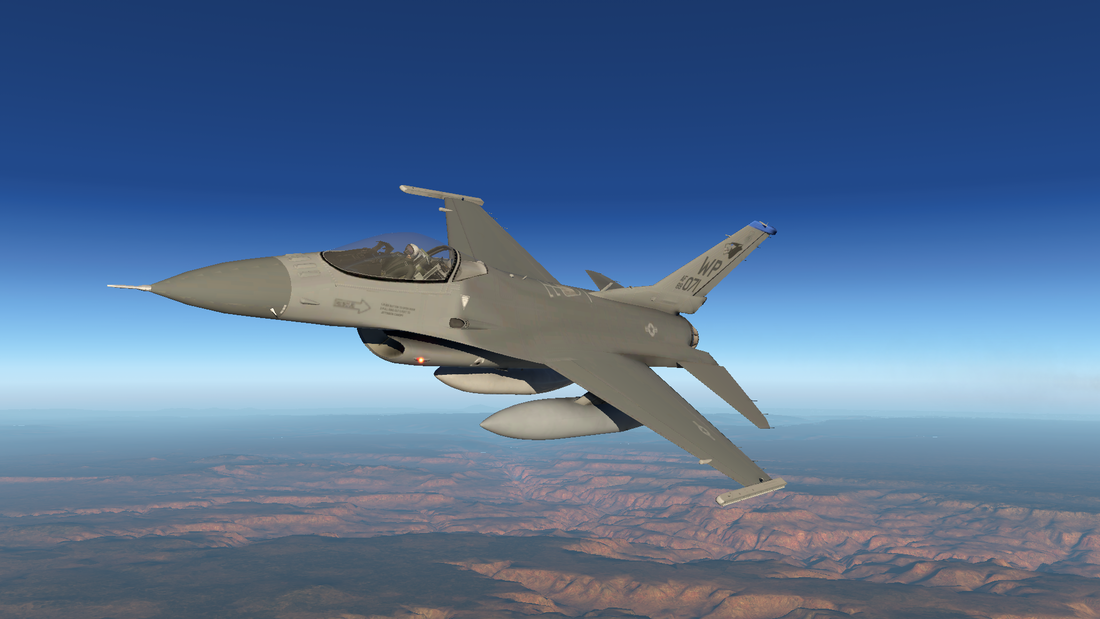


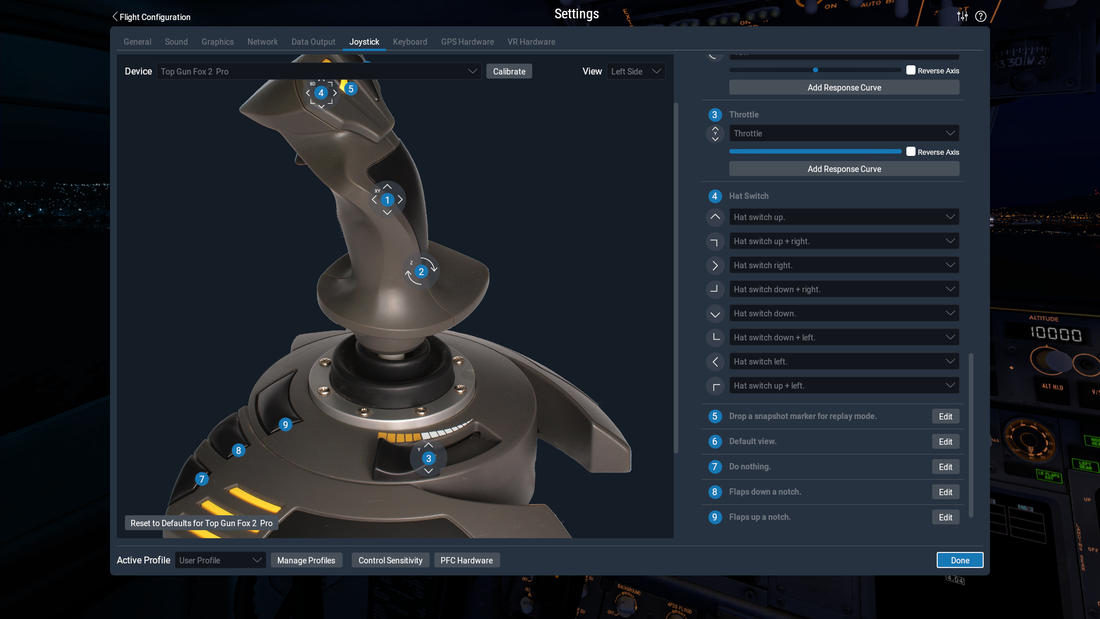
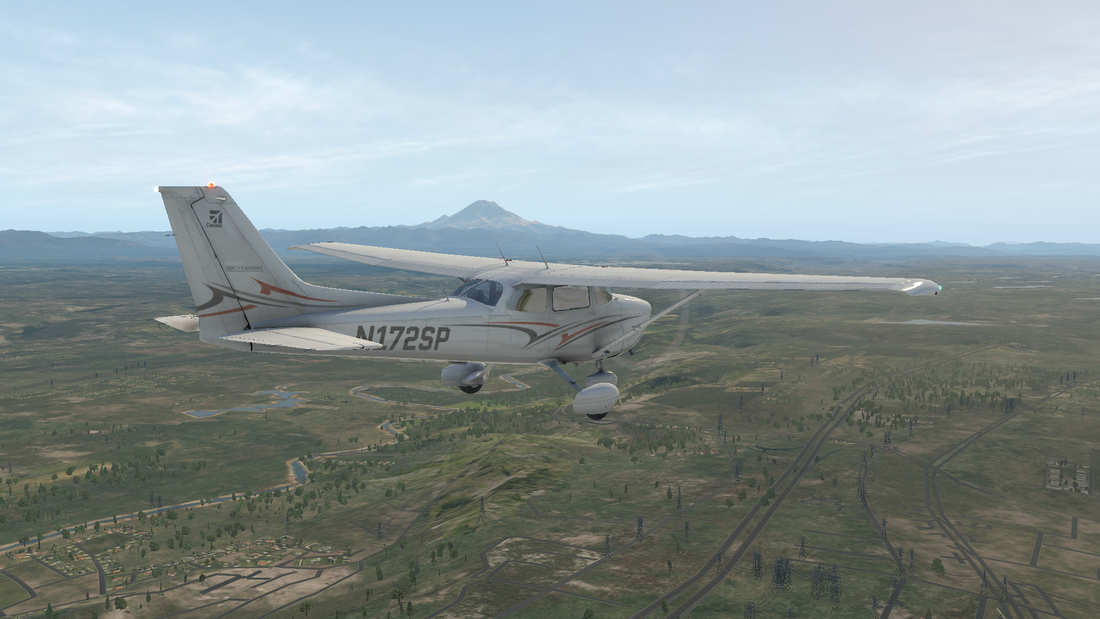

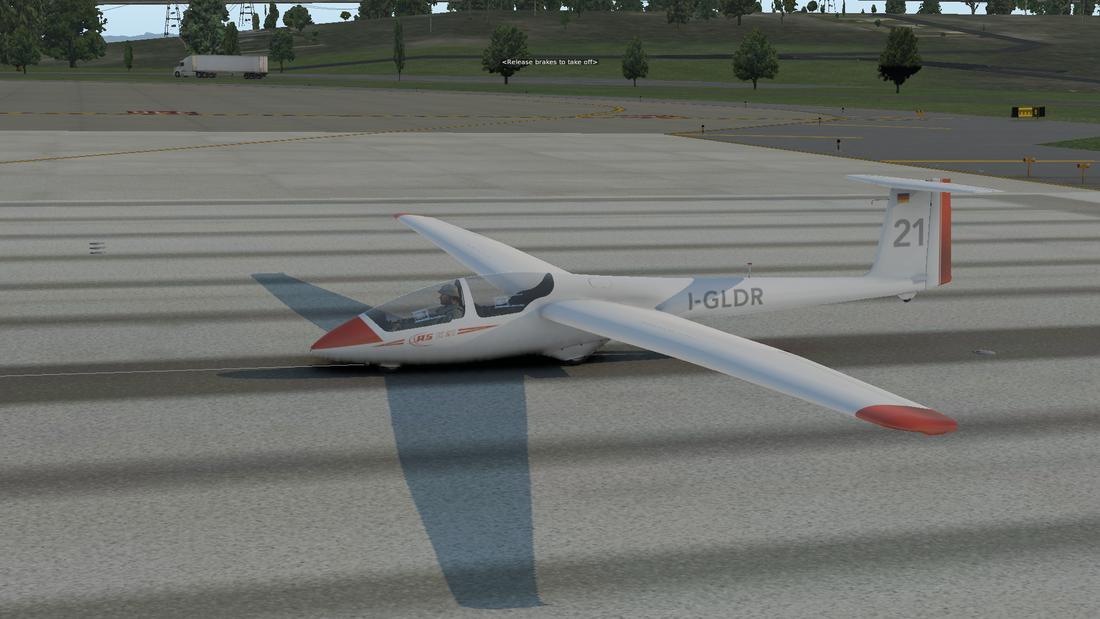
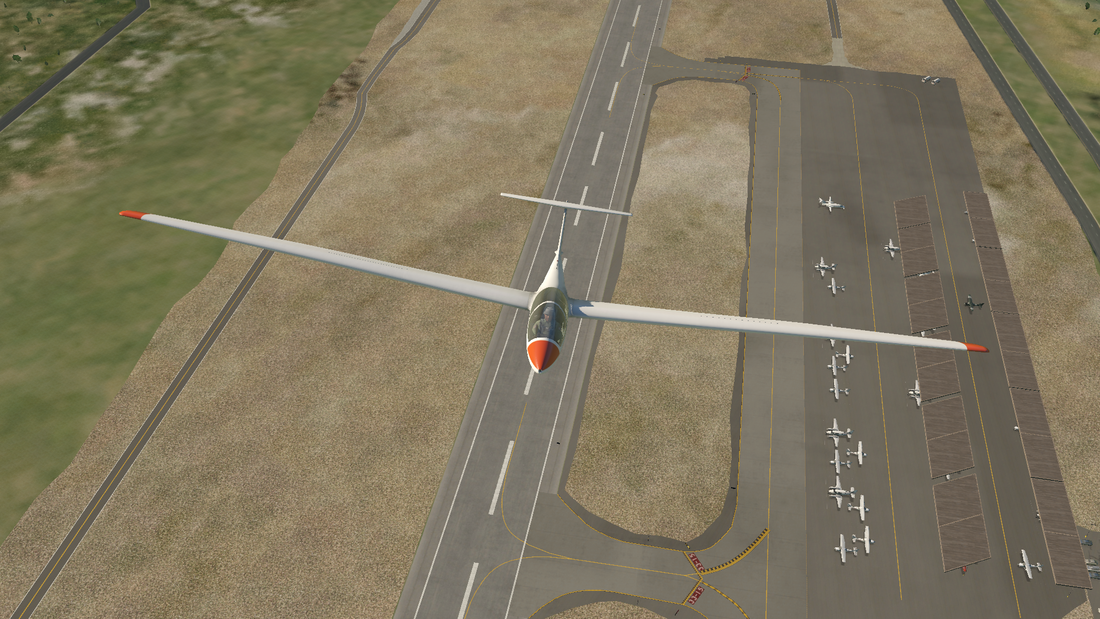
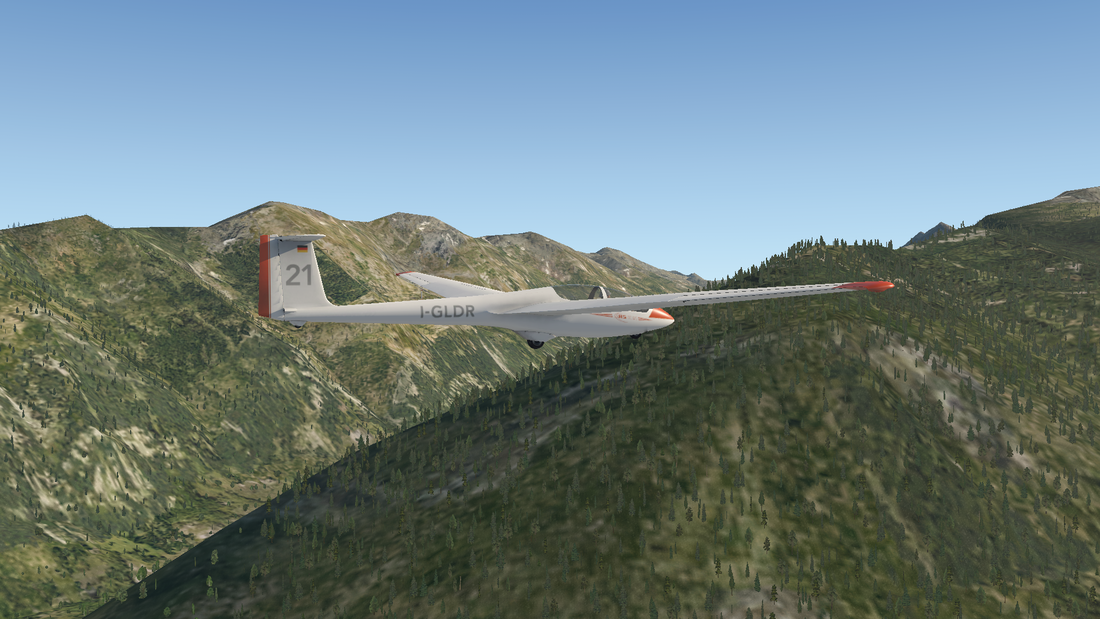

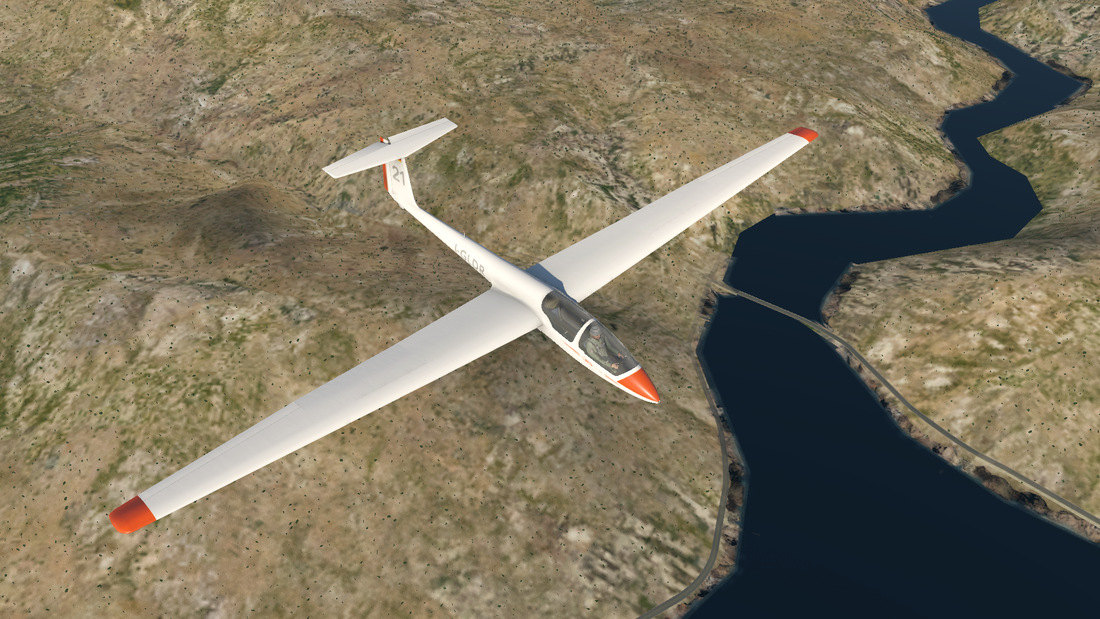
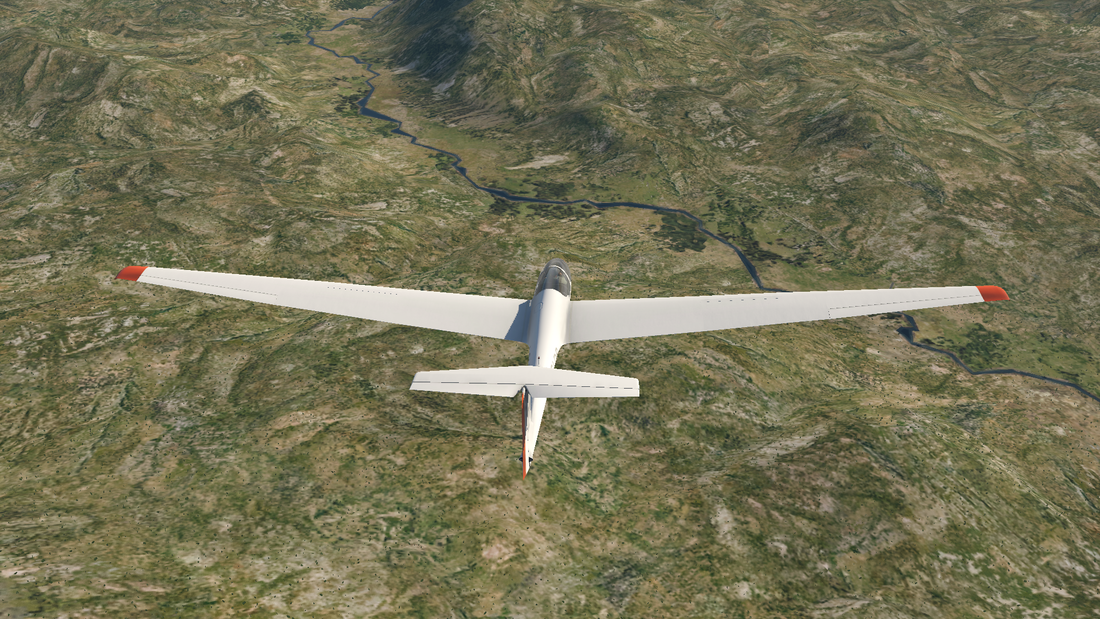

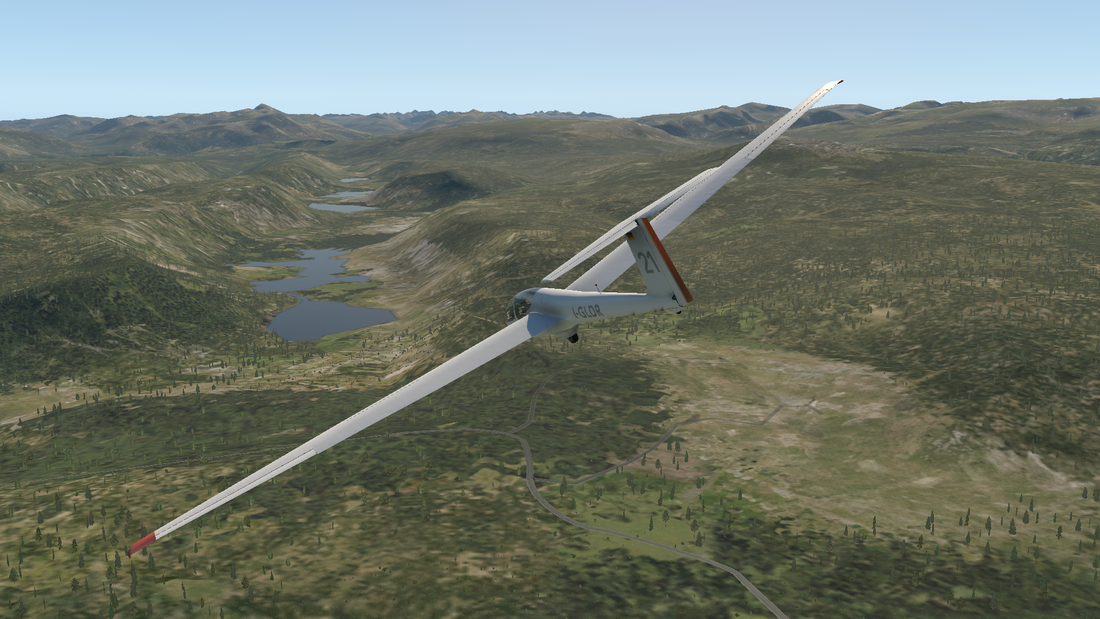
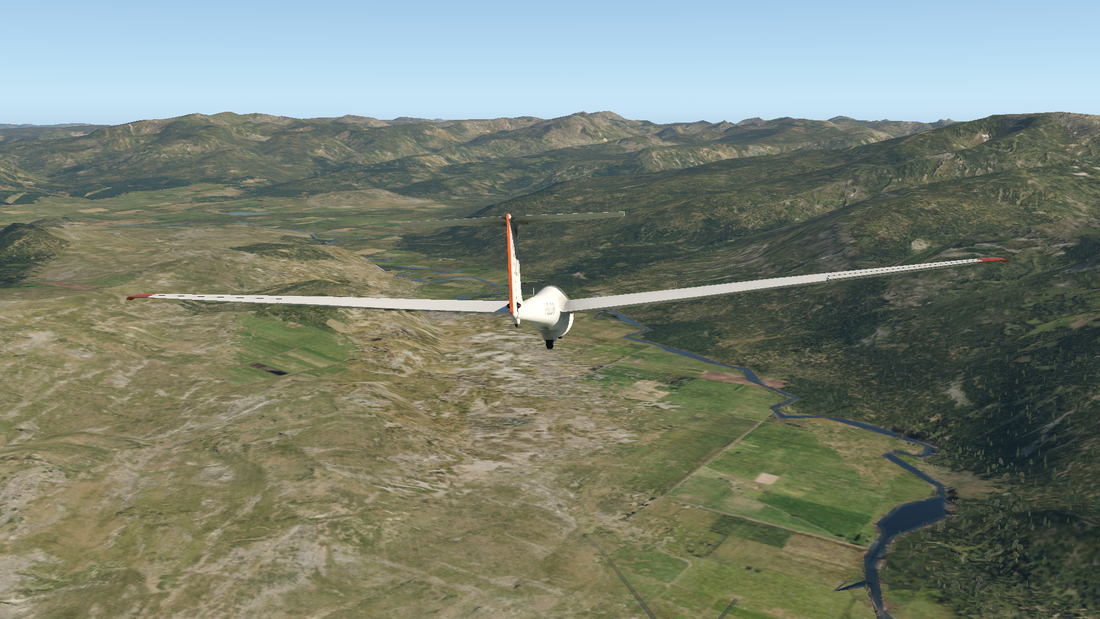
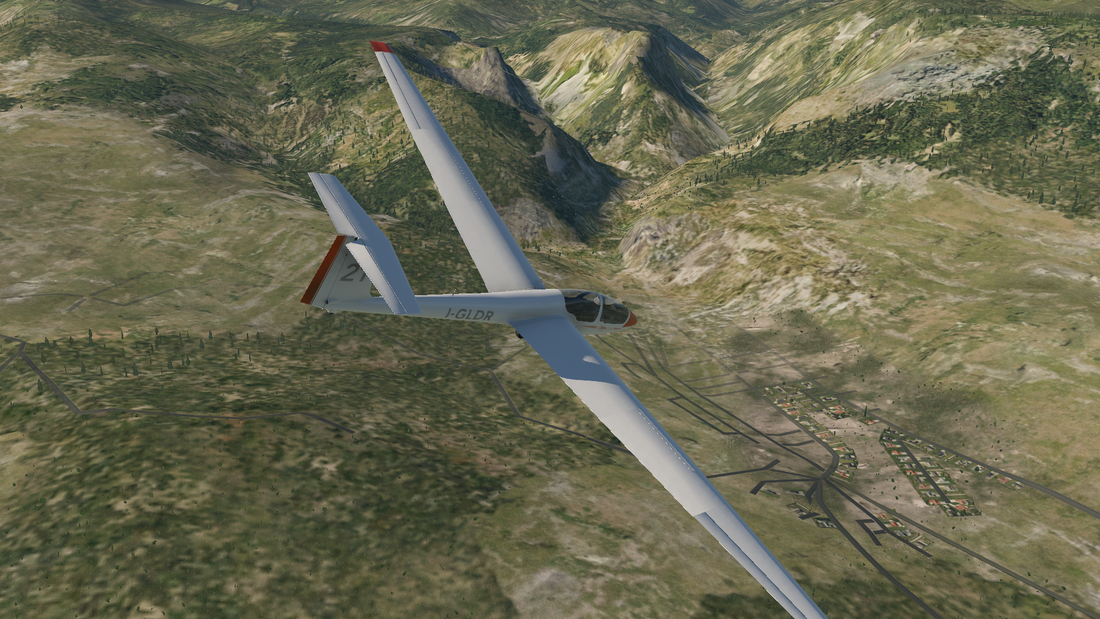
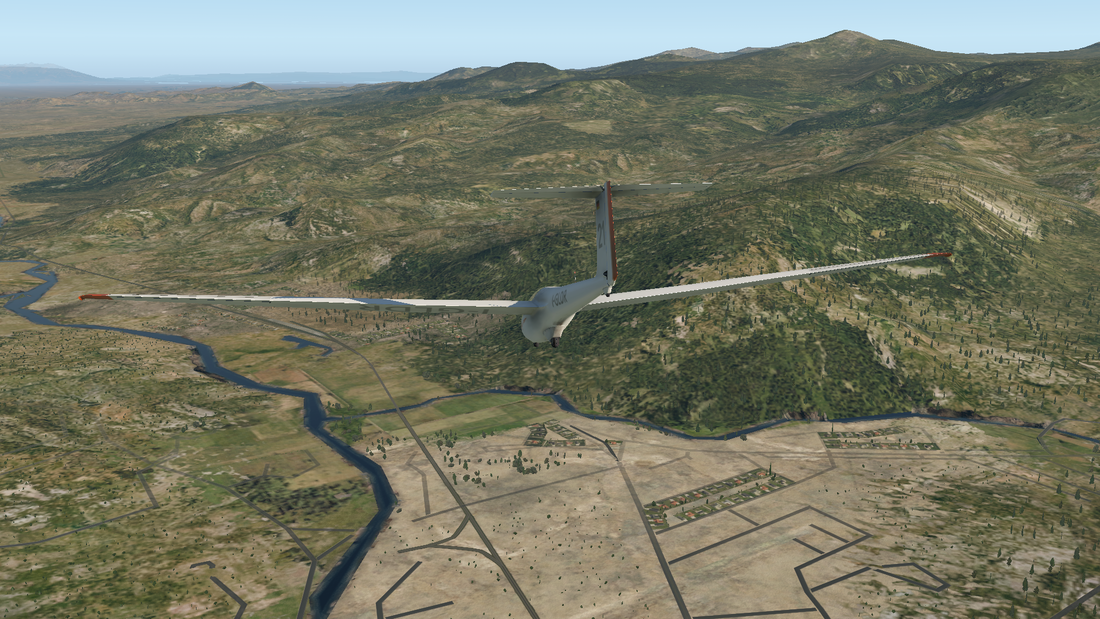
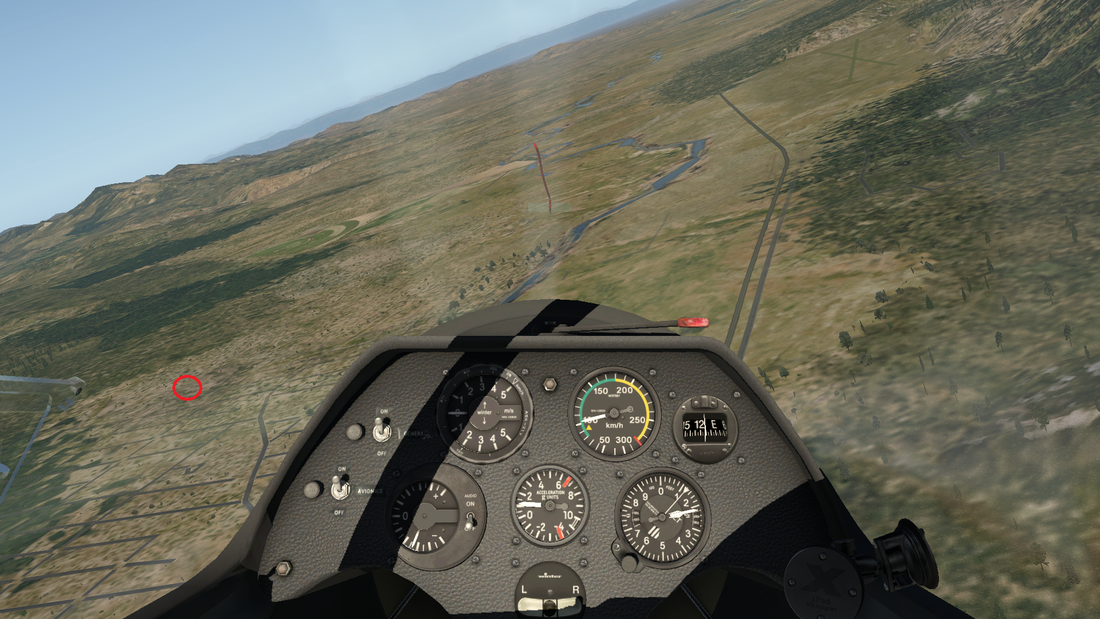
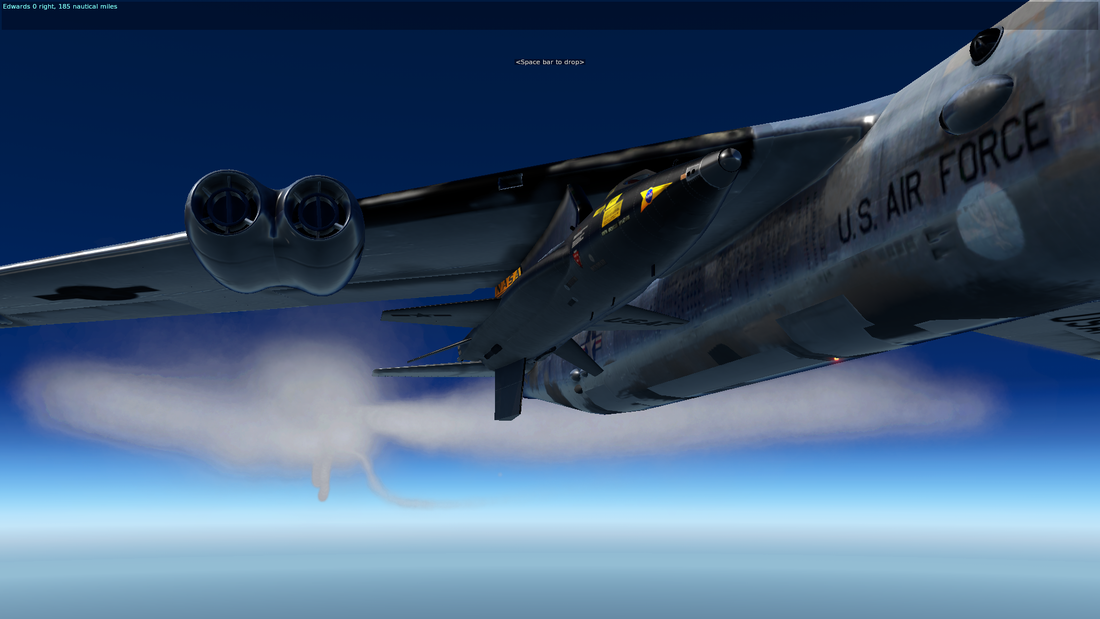
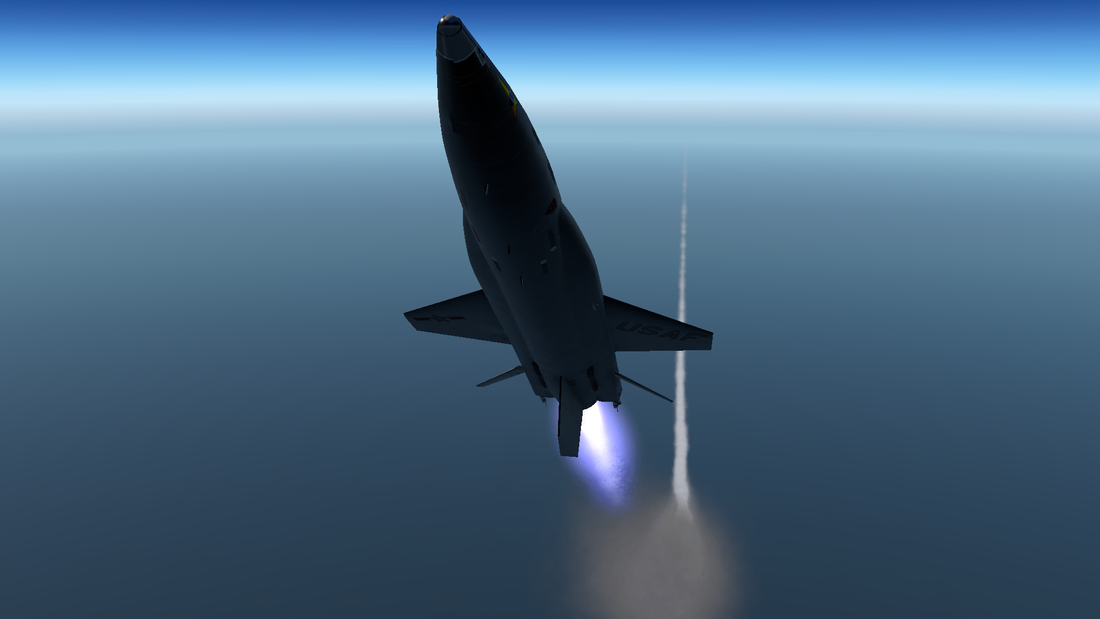
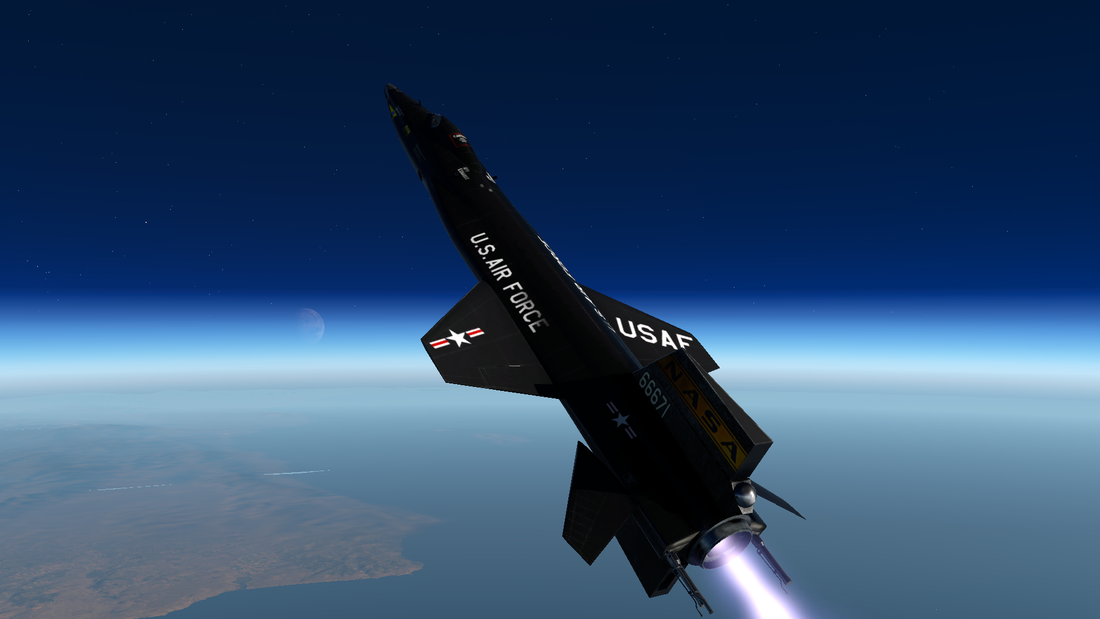
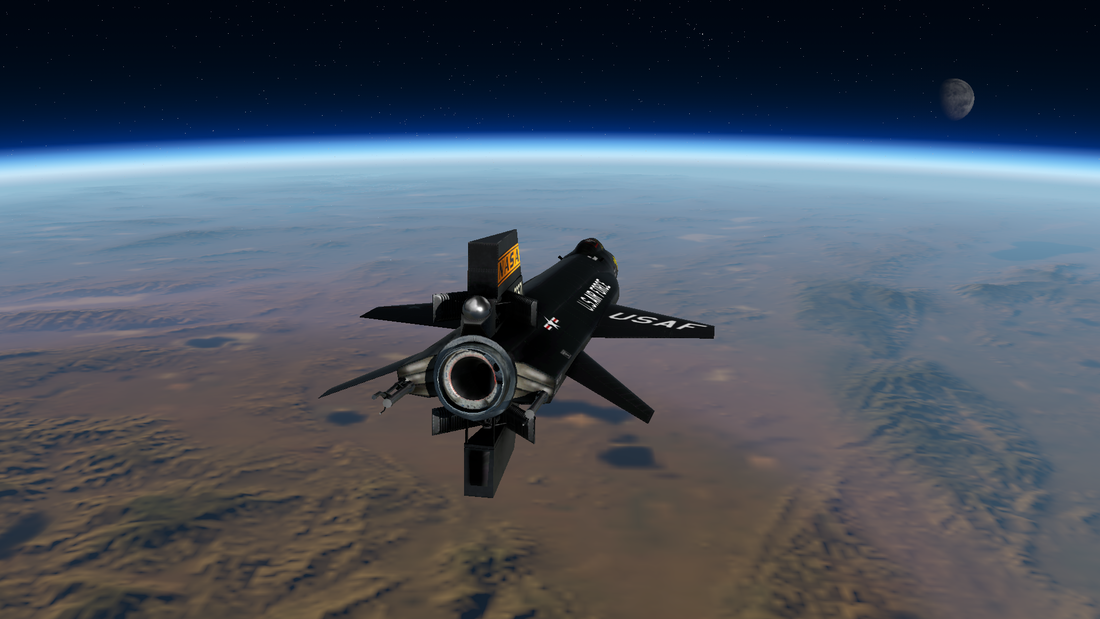
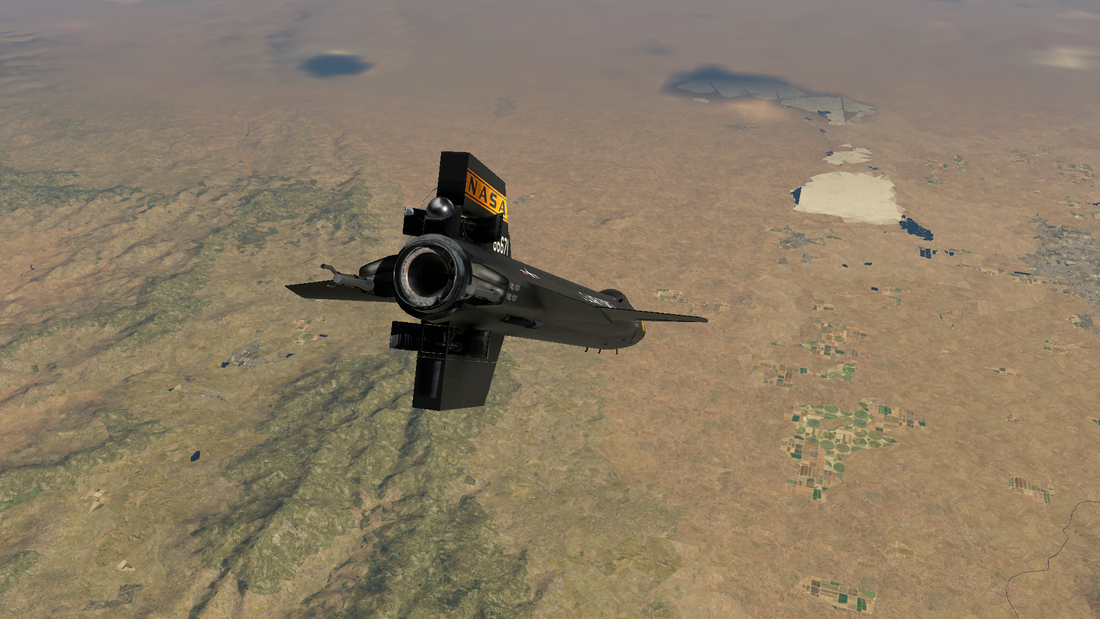

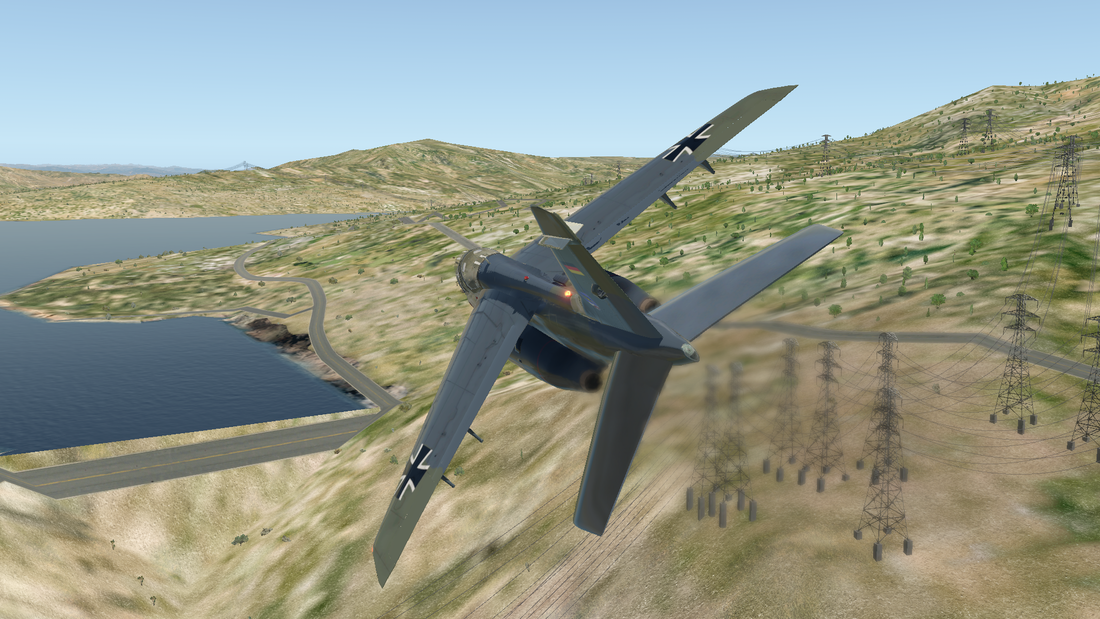
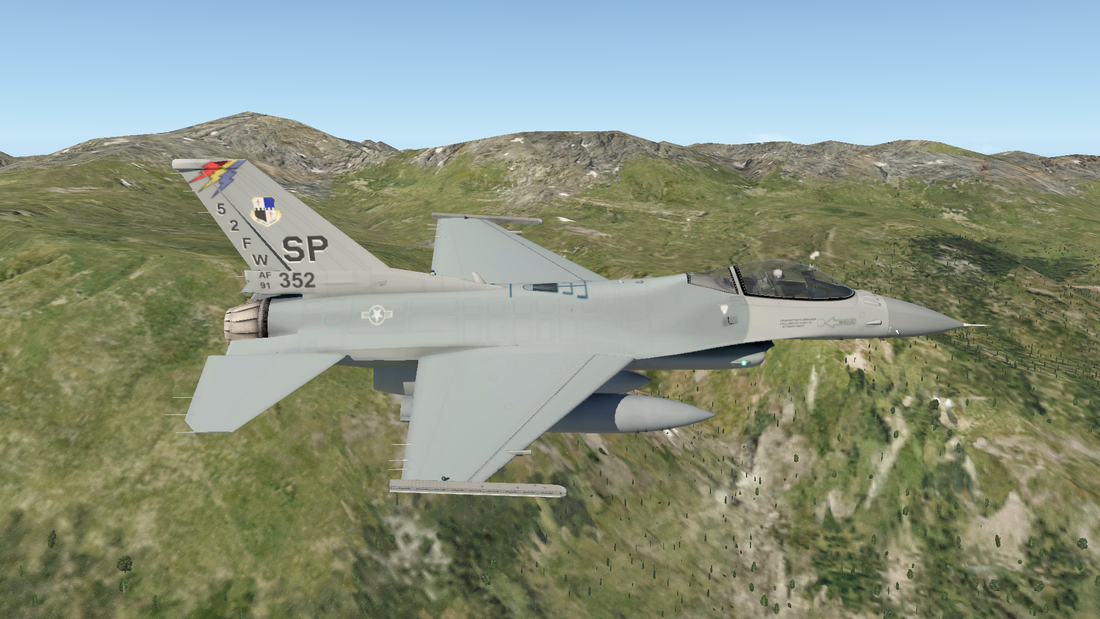
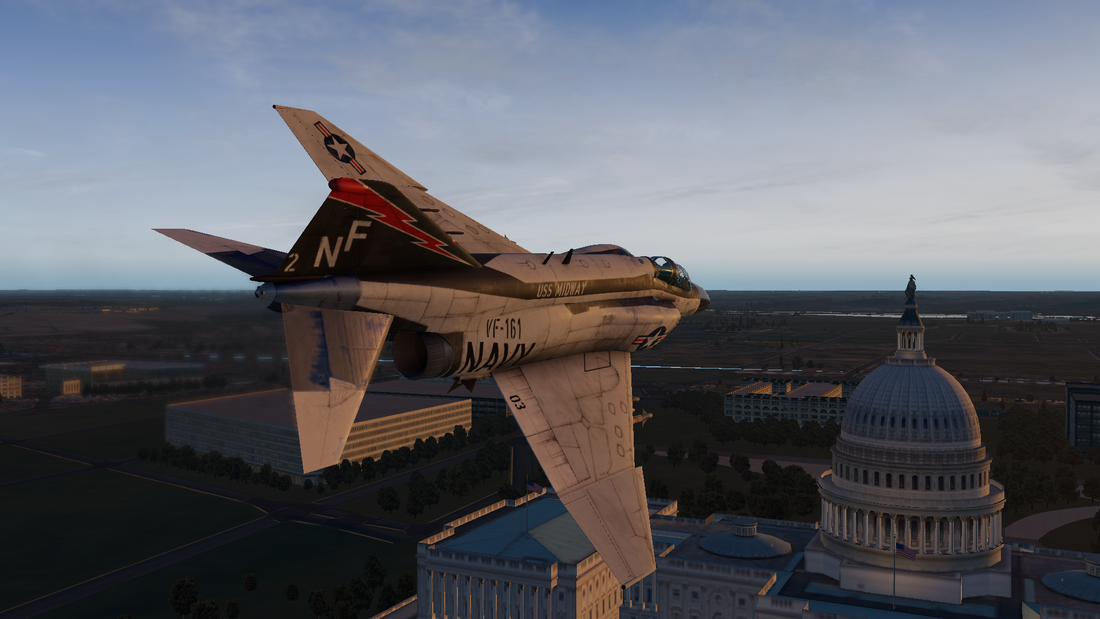

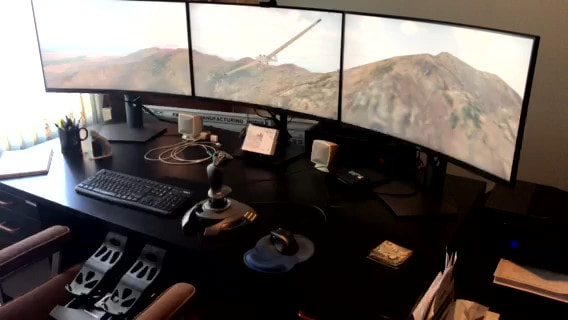



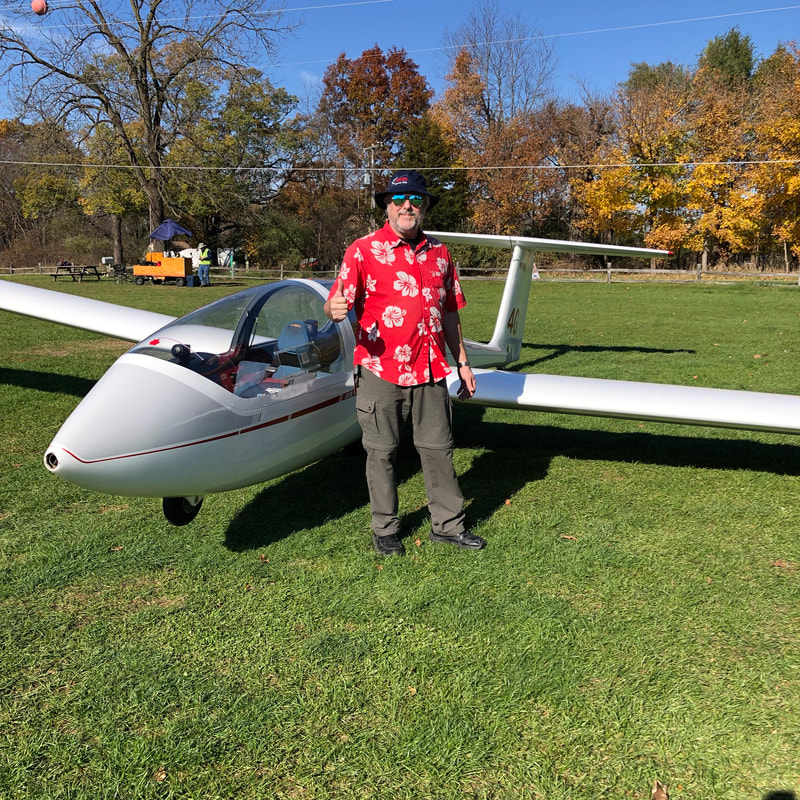
 RSS Feed
RSS Feed